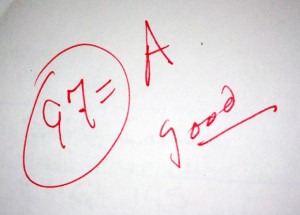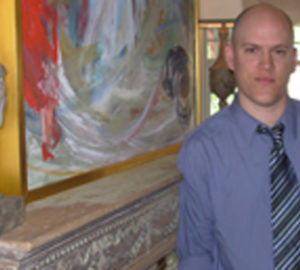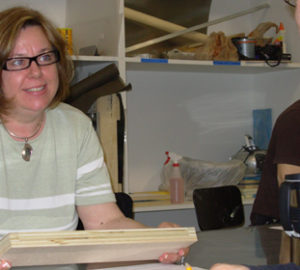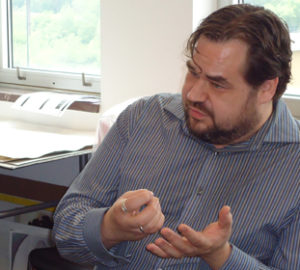
Since the beginning of this quarter, The Connector has been compiling advice from professors in different departments to discover the difference between an ‘A’ and a ‘B.’ Making good grades is highly dependent on personal dedication and individual effort to go the proverbial extra mile. But according to numerous SCAD professors, if a student wants an ‘A’ then there are some things that can dramatically improve their chance of success.
“Mother SCAD,” or professor of foundation studies Jo Peterson said that students should take the initiative to go beyond the first idea and make each project a representation of their individual creativity. “The idea is that you don’t want for everyone to do the same project,” said Peterson.
“What separates [an A from a B] to me is the degree to which the student has progressed with their idea, how much of it is individual, not pushed by me, and how much do they care about their presentation,” said Peterson. Likewise, professor of liberal arts and writing Stephanie Batcos, P.h.D., suggested taking risks to aim for a higher reward.
Batcos said that students should invest their individuality into their work by understanding their own truth through the creative process. Whether writing an essay, short story, screen play or piece of fiction, it is an extension of what students “think” not necessarily what they “know.” Batcos suggested that students take what they have learned and show it through their writing. This means taking the risk of having an individual point of view.
“Hopefully, [students] come to realize that their thesis is their truth. Suddenly [they] become more invested in what they are writing about,” said Batcos. “An ‘A’ essay is going to be one that as I’m reading it, for a moment or two I forget I’m evaluating, because I just get taken with the writing, and it’s the realization that the student is fully in charge of what they are trying to express.”
Batcos related that SCAD offers a unique environment where students can receive instant feedback from professors if they take the initiative to ask. She also said that professors keep office hours to meet and talk with students about their work.
“The first task is to get [students] to realize it’s not a matter of ‘is it right’ or ‘is it wrong;’ it’s a matter of what do [they] really think?” said Batcos. “In the traditional four-year college, the majority of students are probably liberal arts students, taking writing and literature courses just to meet a certain requirement. What we do here at SCAD is try to show how writing is integral to the creative process.”
The creative process, according to Batcos, is only as rewarding as the risk taken to achieve a higher a goal, but without the discipline to follow deadlines and be prepared for class, risk alone will fall short of an ‘A.’
Professor of foundation studies, with a specialty in graphic design, Brett Callero said that a great project can be compromised by poor time management and procrastination. He said that the difference between an ‘A’ student and a ‘B’ student is relative to the amount of time a student spends outside of class thinking, progressing and growing their ideas and concepts for a project. Callero suggested that students make the process enjoyable and focus on discovering what they truly love to do.
“I stress the work aspect, but I also stress the fun aspect. People that go into creative fields for a living are motivated and driven by doing what they love to do,” said Callero. “I love getting up and going to work every morning, because I work in what I call an idea factory, where I am constantly being inspired by students — hopefully, just as much as I am inspiring them.”
Chair of the sculpture department, professor Susan Krause, said that a student’s success isn’t indicative of the facilities, but the relationship that students share with their professor. “What do students need out of the facility? Well, not a whole lot, but in terms of teaching — mentoring and making what I would consider 21st century contenders in the fine arts,” said Krause. “We are really committed to our students and the legacy of sculpture. I think that is lacking in a lot of institutions. But because [the SCAD Atlanta] facility is such a fabulous facility, we’re here all the time.”
Krause also said that the difference between an ‘A’ and a ‘B’ is a student’s willingness to avoid becoming a member of the “good enough” club and the “last minute” club. She related that an ‘A’ student is on time, prepared and participating in class.
Writing professor Darby Sanders also said that preparedness and work ethic contribute to a student’s success in the classroom. “‘A’ students aspire for excellence,” Sanders said. “They go beyond expectations and do it on a consistent basis. I often grade on improvement.” If a student has changed, grown and “worked their tail off,” then that student is deserving of an ‘A,’ he explained.
Sanders said that the creative process is a cycle of success and failure, but without understanding where a student’s weaknesses are, it’s difficult to capitalize on their strengths. Like Batcos, he too suggested “taking risks.”
Good grades are indicative of numerous qualities that SCAD students learn from either experience or advice, but overall, determination to perform at the highest level possible is usually the determining factor between exceptional work and “good enough” work.



























